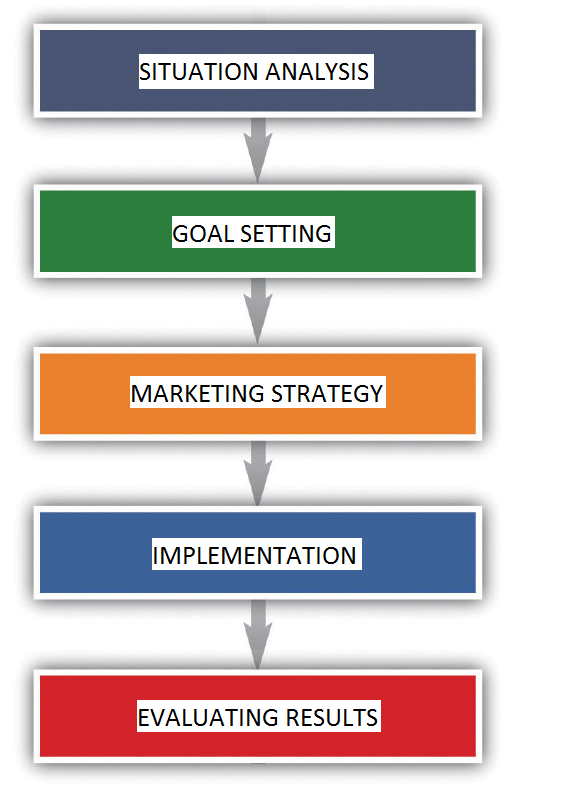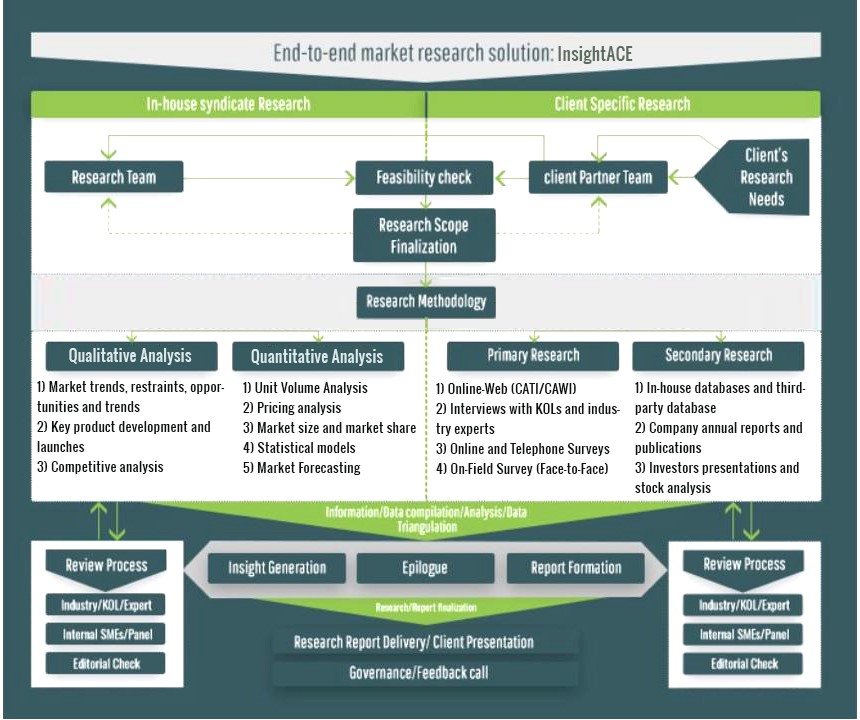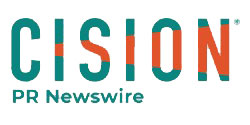
Want to create or adapt books like this? Learn more about how Pressbooks supports open publishing practices.

Chapter 4: Marketing Research
Learning objectives.
- Students will be able to articulate and explain the importance of marketing research for the effective development of a marketing strategy
- Students will differentiate the types and purposes of research techniques
Introduction
Discovering why they chew.
Juicy Fruit Gum, the oldest brand of the Wm. Wrigley Jr. Company, was not chewing up the teen market, gum’s top demographic. In 1997, the company found itself under pressure from competitors. Sales and market share were down. How could Wrigley make more kids chomp on Juicy Fruit? What qualities about Juicy Fruit might appeal to teens? Wrigley went to the source to find out. It found kids who chew five sticks or more of Juicy Fruit each week and promptly gave them a homework assignment. Find pictures that remind them of the gum and write a short story about it. From the focus group, Wrigley learned that teens chew Juicy Fruit because it is sweet. It refreshes and energizes them.
Their ad agency, BBDO, confirmed what the teens were saying. BBDO asked more than 400 heavy gum chewers to rate various brands by attributes that best represented them. For Juicy Fruit, respondents picked phrases such as “has the right amount of sweetness” and “is made with natural sweetness”. Another study by BBDO looked into why teens chew gum. Was it because they are stressed out—or because they forgot to brush their teeth before going to school? Nearly three out of four kids said they stick a wad into their mouth when they crave something sweet. And Juicy Fruit was the top brand they chose to fulfill that need (Big Red was a distant second).
Although the marketing research conducted by the Wrigley Co. was fairly simple, it provided a new direction for their marketing strategy. BBDO developed four TV commercials with the “Gotta Have Sweet” theme. Roughly 70 per cent of respondents voluntarily recalled the Juicy Fruit name after watching the commercial (the average recall for a brand of sugar gum is 57 per cent). Sales of 100-stick boxes of Juicy Fruit rose 5 per cent after the start of the ad campaign, reversing a 2 per cent decline prior to it. Juicy Fruit’s market share also increased from 4.9 per cent to 5.3 per cent, the biggest gain of any established chewing gum brand during the year following the campaign.
Marketing research addresses the need for quicker, yet more accurate, decision making by the marketer. The impetus for this situation is the complex relationship between the business firm and the ever-changing external environment. In particular, most marketers are far removed from their customers; yet most know who their customers are, what they want, and what competitors are doing. Often the marketer relies on salespeople and dealers for information, but more and more the best source of information is marketing research.
It should be noted that most marketing decisions are still made without the use of formal marketing research. In many cases, the time required to do marketing research is not available. In other cases, the cost of obtaining the data is prohibitive or the desired data cannot be obtained in reliable form. Ultimately, successful marketing executives make decisions on the basis of a blend of facts and intuition.
Marketing research is applicable throughout the marketing planning process. It is a very exciting field that allows organizations to make strategic decisions to achieve their objectives. Taking the time to research the environment, the competition, and most importantly, the target market, allows a marketer to make well-informed decisions. Marketing research can be conducted in all sizes and types of organizations. While resources may be limited, there are many credible sources of information that are free or inexpensive to access.
In this chapter, we are going to explore the marketing research process. Before getting into the process, let’s discuss some of the potential issues or hurdles a marketer might face.
Potential Issues
There are two main hurdles that can get in the way of effective research within an organization: a sense of urgency, and resource allocation
- Sense of Urgency: While some research can be ‘looked up’ fairly quickly, good quality research takes time. Marketers or others within an organization, may want to move on decision making quickly without taking the time to do proper research. This becomes more prevalent when decision makers use ‘what works for me’ or ‘what I like’ to make decisions regarding the target market.
- Resource Allocation: Marketing research can be expensive. When requesting approval for the expenditure, a researcher may experience resistance as the research cannot guarantee a specific return on the investment.
Marketing Copyright © by Kim Donahue is licensed under a Creative Commons Attribution-NonCommercial-ShareAlike 4.0 International License , except where otherwise noted.
Share This Book
4.2 Marketing Research: an aid to decision making
Learning objectives.
The objectives of this section is to help students …
- Understanding the role of marketing research
- Understanding the marketing research process and the techniques employed
Discovering why they chew
Juicy Fruit Gum, the oldest brand of the Wm. Wrigley Jr. Company, was not chewing up the teen market, gum’s top demographic. In 1997, the company found itself under pressure from competitors. Sales and market share were down. How could Wrigley make more kids chomp on Juicy Fruit?
What qualities about Juicy Fruit might appeal to teens? Wrigley went to the source to find out. It found kids who chew five sticks or more of Juicy Fruit each week and promptly gave them a homework assignment. Find pictures that remind them of the gum and write a short story about it. From the focus group, Wrigley learned that teens chew Juicy Fruit because it is sweet. It refreshes and energizes them.
Their ad agency, BBDO, confirmed what the teens were saying. BBDO asked more than 400 heavy gum chewers to rate various brands by attributes that best represented them. For Juicy Fruit, respondents picked phrases such as “has the right amount of sweetness” and “is made with natural sweetness”.
Another study by BBDO looked into why teens chew gum. Was it because they are stressed out—or because they forgot to brush their teeth before going to school? Nearly three out of four kids said they stick a wad into their mouth when they crave something sweet. And Juicy Fruit was the top brand they chose to fulfill that need (Big Red was a distant second). (10)
Introduction
Although the marketing research conducted by the Wrigley Co. was fairly simple, it provided a new direction for their marketing strategy. BBDO developed four TV commercials with the “Gotta Have Sweet” theme. Roughly 70 per cent of respondents voluntarily recalled the Juicy Fruit name after watching the commercial (the average recall for a brand of sugar gum is 57 per cent). Sales of 100-stick boxes of Juicy Fruit rose 5 per cent after the start of the ad campaign, reversing a 2 per cent decline prior to it. Juicy Fruit’s market share also increased from 4.9 per cent to 5.3 per cent, the biggest gain of any established chewing gum brand during the year following the campaign.

Figure 4.5: The marketing planning process
Marketing research addresses the need for quicker, yet more accurate, decision making by the marketer. The impetus for this situation is the complex relationship between the business firm and the ever-changing external environment. In particular, most marketers are far removed from their customers; yet most know who their customers are, what they want, and what competitors are doing. Often the marketer relies on salespeople and dealers for information, but more and more the best source of information is marketing research.
It should be noted that most marketing decisions are still made without the use of formal marketing research. In many cases, the time required to do marketing research is not available. In other cases, the cost of obtaining the data is prohibitive or the desired data cannot be obtained in reliable form. Ultimately, successful marketing executives make decisions on the basis of a blend of facts and intuition.
The nature and importance of marketing research
Informal and, by today’s standards, crude attempts to analyze the market date back to the earliest days of the marketing revolution. Only in recent years, however, has the role of research as it relates to management been clearly recognized.
Reflecting this change in orientation, the following definition of marketing research is offered: marketing research is the scientific and controlled gathering of non-routine marketing information undertaken to help management solve marketing problems. There is often hearty disagreement over the answer to the question of whether marketing research is a science. One’s answer depends on the employed definition of “science”. To be specific, a research activity should use the scientific method. In this method, hypotheses (tentative statements of relationships or of solutions to problems) are drawn from informal observations. These hypotheses are then tested. Ultimately, the hypothesis is accepted, rejected, or modified according to the results of the test. In a true science, verified hypotheses are turned into “laws”. In marketing research, verified hypotheses become the generalizations upon which management develops its marketing programs. (To simplify our discussion, we will use “questions” as a synonym of “hypothesis”.)
The mechanics of marketing research must be controlled so that the right facts are obtained in the answer to the correct problem. The control of fact-finding is the responsibility of the research director, who must correctly design the research and carefully supervise its execution to ensure that it goes according to plan. Maintaining control in marketing research is often difficult because of the distance that separates the researcher and the market and because the services of outsiders are often required to complete a research project. (1)
Student Example
Apple creating and updating their products consistently always leads to consumers waiting to see what else could possibly be done to help improve their products. This is where marketing research can ve utilized and can really help the company to advance in their sales.
Tarrah Clark
Class of 2020
What needs researching in marketing?
An easy, and truthful, answer to this question is “everything”. There is no aspect of marketing to which research cannot be applied. Every concept presented in this marketing text and every element involved in the marketing management process can be subjected to a great deal of careful marketing research. One convenient way to focus attention on those matters that especially need researching is to consider the elements involved in marketing management. Many important questions relating to the consumer can be raised. Some are:
• Who is/are the customer(s)?
• What does he/she desire in the way of satisfaction?
• Where does he/she choose to purchase?
• Why does he/she buy, or not buy?
• When does he/she purchase?
• How does he/she go about seeking satisfaction in the market?
Another area where research is critical is profits. Two elements are involved. First, there is the need to forecast sales and related costs—resulting in profits. Second, there is the necessity to plan a competitive marketing program that will produce the desired level of sales at an appropriate cost. Sales forecasting is the principal tool used in implementing the profit-direction element in the marketing management concept. Of course, the analysis of past sales and interpretation of cost information are important in evaluation of performance and provide useful facts for future planning.
A great deal of marketing research is directed toward rather specialized areas of management. These activities are broken down into five major areas of marketing research. Briefly, these activities are:
• research on markets —market trends, market share, market potentials, market characteristics, completion, and other market intelligence
As a business development intern, I work a lot with the marketing team in helping them get the time-consuming, yet necessary research on either specific markets we are entering or potential new clients. For example, I conducted research on the retail market in the Philippines. When I do this kind of research, I look at the market trends, forecasts, and things like the relationship between brick-and-mortar stores vs. online shopping in this case.
Cassidy Lane
• research on sales —sales analysis, sales forecasting, quota-setting, sales territory design, sales performance measurement, trade channels, distribution costs, and inventories • research on products—new product research, product features, brand image, concept tests, product tests, and market tests
When I worked at a retail store, we would forecast our sales for the day based on how much was sold on that day last year and then set our individual quotas based on that information. We would also analyze at the end of the day why we either met or missed our goals. For example, if the weather was bad, that could affect our sales for the day regardless of whether it was a big day the year before. We did a lot of product research, especially on new products, because it made our customers’ experience better if we were able to tell them about why the products were of better quality than others.
• research on advertising and promotion —promotion concepts, copy research, media research, merchandising, packaging, advertising effectiveness measurement
• research on corporate growth and development —economic and technological forecasting, corporate planning inputs, corporate image, profitability measurement, merger and acquisition, and facilities location.
| Sales forecast Cost forecast Product testing Consumer needs Consumer attitudes Consumer product usage Market size/trends Product replacement | Demographic trends Legislative impact Price testing Marketing communication testing Channel locations Competition Psychographic trends Environmental trends |
Table 4.1: Areas of research application.
Newsline: How execs use research
Creating and introducing new products is the most important research priority among marketing executives. The Marketing Science Institute of Cambridge, Massachusetts, USA, surveyed 160 executives from its sponsoring organizations. The executives, representing 60 major consumer and industrial goods and services corporations, were asked to divide 100 points among several research areas.
After successful new product introductions, the executives said that market orientation and customer relationships are the next most important areas. Those issues displaced improving the use of marketing information and measuring brand equity as the second- and third-highest concerns, respectively, in the previous survey.
“The new research priorities indicate that a shift is taking place in marketing practice”, notes Donald Lehmann, executive director of the institute. “Market orientation has taken hold and the increasing power of the consumer is apparent in the movement away from product-driven strategies. Marketers also realize that they need to make choices about who their customers should be and whose needs they are best equipped to meet … and most significantly, they are looking for better ways to anticipate adoption and diffusion of really new products.” said Marni Clippenger, communications director at MSI, “Companies seem to be shifting away from using the brand to really figuring out what customers want.” (11)
1. Marketing research is the scientific and controlled gathering of nonroutine marketing information undertaken to help management solve marketing problems.
2. Any business that is consumer-oriented will benefit from marketing research.
3. Research can be applied to every facet of marketing.
(10): “How Sweet It Is,” American Demographics, March 2000, p, S 18; “Flavor du Jour,” American Demographics, March 2000, p, SI0; Erika Rasmusson, “Cool for Sale,” Sales & Marketing Management, March 1998, pp. 20-22,+
(11): Rachel Rosenthal. “New Products Reign as Research Priority,” Advertising Age, August 8, 1994, p. 26; Robert McMath, “To Test or Not To Test,” American Demographics, June 1998, p. 64; John McManus, “Mission Invisible,” American Demographics, March 1999, p. 6.
(1) Ralph H. Sprague, Jr. and Hugh J. Watson, Decision Support Systems:Putting Theory Into Practice, Englewood Cliffs, N.J.: Prentice-Hall,1986, p. 1
(2) Claire Selitz, Lawrence S. Wrightsman, and Stuart W. Cook, Research Methods in Social Relations, New York: Holt, Reinhart and Winston, 1976, pp. 11 4-115.
(3) Ian P. Murphy, “Research with Bottom Line in Mind Only,” Marketing News, March 3, 1997, p. 10.
(4) Pamela L. Alreck and Robert D. Settle, The Survey Research Hand book, Richard D. Irwin, Inc., 1995.
(5) Seymour Sudman, Applied Sampling, New York: Academic Press, 1976
Share This Book
- Increase Font Size

- Request new password
- Create a new account
Principles of Marketing for a Digital Age
Student resources, chapter 4: marketing research and analysis.
Conducting Research in Marketing with Quasi-Experiments
Goldfarb, A., Tucker, C., & Wang, Y. (2022). Conducting research in marketing with quasi-experiments. Journal of Marketing, 86 (3), 1–20. https://doi.org/10.1177/00222429221082977
Chapter Summary
In this chapter, we defined business-to-business (B2B) markets and buying behavior and explored the differences between business-to-consumer (B2C) and B2B markets. We discussed the types of buyers in B2B transactions—producers, resellers, governments, and institutions—and identified the different types of buy classes in the B2B market, as well as the roles of those in the buying center—the people within the organization who have varying influence on the purchase decision.
We examined the five major categories of influencing factors on B2B decisions: external factors, internal factors, organizational factors, interpersonal factors, and conditional factors. We also reviewed the eight stages of the B2B buying process: problem recognition, need description, product specification, supplier search, proposal solicitation, supplier selection, order-routine specification, and performance review. Finally, we explored some ethical issues with respect to the B2B buying process, including Transparency International’s Corruption Perceptions Index and the Foreign Corrupt Practices Act (FCPA).
This book may not be used in the training of large language models or otherwise be ingested into large language models or generative AI offerings without OpenStax's permission.
Want to cite, share, or modify this book? This book uses the Creative Commons Attribution License and you must attribute OpenStax.
Access for free at https://openstax.org/books/principles-marketing/pages/1-unit-introduction
- Authors: Dr. Maria Gomez Albrecht, Dr. Mark Green, Linda Hoffman
- Publisher/website: OpenStax
- Book title: Principles of Marketing
- Publication date: Jan 25, 2023
- Location: Houston, Texas
- Book URL: https://openstax.org/books/principles-marketing/pages/1-unit-introduction
- Section URL: https://openstax.org/books/principles-marketing/pages/4-chapter-summary
© Jan 9, 2024 OpenStax. Textbook content produced by OpenStax is licensed under a Creative Commons Attribution License . The OpenStax name, OpenStax logo, OpenStax book covers, OpenStax CNX name, and OpenStax CNX logo are not subject to the Creative Commons license and may not be reproduced without the prior and express written consent of Rice University.

Want to create or adapt books like this? Learn more about how Pressbooks supports open publishing practices.
Chapter 4: Marketing Strategy
Learning Objectives
- Explain why a marketing strategy matters
- Evaluate how marketing strategies align with corporate strategies
- Explain the inputs and components of a marketing strategy
- Show how common analytic tools are used to inform the organization’s strategy
- Give examples of corporate strategies
- Explain how the development and maintenance of customer relationships are an essential part of an organization’s marketing strategy
Introduction to Marketing - MKTG 3433 Copyright © 2022 by WCOB Marketing Faculty is licensed under a Creative Commons Attribution 4.0 International License , except where otherwise noted.
Share This Book
| '); document.write(' '); } --> '); document.write(' '); } --> | |










IMAGES
VIDEO
COMMENTS
II. Step 2: Design the Research. The next step in the marketing research process is to do a research design. The research design is your "plan of attack.". It outlines what data you are going to gather and from whom, how and when you will collect the data, and how you will analyze it once it's been obtained.
Chapter 4: Marketing Research Learning Objectives. ... Marketing research addresses the need for quicker, yet more accurate, decision making by the marketer. The impetus for this situation is the complex relationship between the business firm and the ever-changing external environment. In particular, most marketers are far removed from their ...
Chapter 4. Chapter 4: Gathering and Using Information: Marketing Research and Market Intelligence ... In marketing research, verified hypotheses become the generalizations upon which management develops its marketing programs. (To simplify our discussion, we will use "questions" as a synonym of "hypothesis".)
Study with Quizlet and memorize flashcards containing terms like What is the second step in the Market Research Process?, What does GIGO stand for?, What two flavors is the market research data available in? and more. ... Marketing Chapter 4 Test. 52 terms. NLukaszek15. Preview. A&P - Nervous System. Teacher 30 terms. Ms_Heldman. Preview ...
MIS helps users in making management decisions. MIS may provide information to external partners, such as suppliers, resellers, or marketing services agencies. MIS interacts with the information users to assess information needs. MIS helps users to analyze and use the information to develop customer insights. and more.
Conducting Marketing Research | Chapter 4Chapter 4 | Conducting Marketing ResearchWhat is The Scope of Marketing Research?Marketing research is the function ...
Social Science. Business. Chapter 4: Marketing Research and Analytics. Get a hint. The systematic design, collection, interpretation, and reporting of information to help marketers solve specific marketing problems or take advantage of marketing opportunities. Click the card to flip 👆.
Marketing Research Process of defining market problem and opportunity, systematically collecting and analyzing information. Reduce risk, improve marketing decisions. Measure of Success Criteria/Standards used in evaluating proposed solutions to problem. Objectives Specific, measurable, and achievable goals. Chapter 4
Tracy has curated a collection of cutting edge research articles to accompany each chapter from the American Marketing Association. Make use of this exclusive access to 25 studies by leading researchers in the field of Marketing and max your grade!Journal of Marketing and Journal of Marketing Research articles are available courtesy of the American Marketing Association: www.ama.org
Chapter 11: Maintaining Value: Branding and Brand Management; Chapter 12: Managing Value: Analytics and Marketing Value Management Systems; AMA Journal Articles. Chapter 1: Understanding Marketing ; Chapter 2: Understanding Buyers; Chapter 3: Segmentation, Targeting, and Positioning; Chapter 4: Marketing Research and Analysis; Chapter 5 ...
This exciting new text offers a hands-on, applied approach to developing the fundamental data analysis skills necessary for making better management decisions using marketing research results. Each chapter opens by describing an actual research study related to the chapter content, with rich examples of contemporary research practices ...
In the Spotlight; 1.1 Marketing and the Marketing Process; 1.2 The Marketing Mix and the 4Ps of Marketing; 1.3 Factors Comprising and Affecting the Marketing Environment; 1.4 Evolution of the Marketing Concept; 1.5 Determining Consumer Needs and Wants; 1.6 Customer Relationship Management (CRM); 1.7 Ethical Marketing; Chapter Summary; Key Terms; Applied Marketing Knowledge: Discussion Questions
Chapter 4 - Conducting Marketing Research.pdf - Free download as PDF File (.pdf), Text File (.txt) or read online for free. The marketing research process involves 6 main steps: 1) Define the problem and research objectives 2) Develop a research plan covering data sources, approaches, instruments, sampling, and contact methods 3) Collect information using various qualitative and quantitative ...
Classification of Marketing Research 6 The Marketing Research Process 8. Step 1: Problem Definition 8 Step 2: Development of an Approach to the Problem 8 Step 3: Research Design Formulation 9 Step 4: Fieldwork or Data Collection 9 Step 5: Data Preparation and Analysis 9 Step 6: Report Preparation and Presentation 9.
Chapter 4: Marketing Strategy. Learning Objectives. Explain why a marketing strategy matters. Evaluate how marketing strategies align with corporate strategies. Explain the inputs and components of a marketing strategy. Show how common analytic tools are used to inform the organization's strategy. Give examples of corporate strategies.
Market Research. The methodical identification, collection, analysis, and distribution of data related to discovering and then solving marketing problems or opportunities and enhancing good decision making. Management research deliverable. The definition of what management wants to do with marketing research.
Marketing Research Chapter 4: Qualitative Research I. MCQ: Qualitative research procedures are classified as either _____ or _____. A) primary; secondary B) direct; indirect C) descriptive; exploratory D) theoretical; non-theoretical E) partial; total _____ is an example of the casual research: A) Observational data B) Experimental data C) Survey data D) Qualitative data
Chapter 4: Conducting Marketing Research What is the scope of marketing research? Marketing research consists of systematically gathering data about people or companies - a market - and then analyzing it to better understand what that group of people needs. The results of market research, are then used to help business owners make more ...
Chapter Summary. Describe and explain the impact marketing research has on marketing decision. Marketing research is the set of activities central to all marketing-related decisions regardless of the complexity or focus of the decision. Marketing research is responsible for providing managers with accurate, relevant, and timely information so ...
Researchers must be hyperaware of the emerging trends in the marketing research and insights industry to maintain a connection with consumers and clients. In order to understand how consumers feel about the advancements being made and the change in their behaviors, they must take speed, segmentation and AI into consideration.
-Secondary data analysis: the process of searching for and interpreting existing information relevant to the topic-Experience surveys: gathering information from those who are knowledgeable on the issues relevant to the problem-Case analysis: review of available information about a former situation that has some similarities to the current problem-Focus groups: small groups brought together ...
The gRNA Market Size is valued at USD 492.4 Mn in 2023 and is predicted to reach USD 1,751.4 Mn by the year 2031 at an 17.4% CAGR during the forecast period for 2024-2031.. The global guide RNA (gRNA) market is experiencing significant growth due to its essential role in CRISPR-based genetic engineering. gRNA, a short RNA sequence, guides Cas9 and other Cas proteins to specific DNA sequences ...
BENGALURU -- India's stock market regulator has been hit by toxic workplace claims, just after U.S. short seller Hindenburg Research accused the agency's chief of conflict-of-interest over her ...
Private landlords look to be leaving the rental market at a record pace, according to research from the property website Rightmove. It says rising costs, taxes and legislation are making it more ...
1 stimulate new ideas, thoughts and feelings about a topic. 2 foster understanding of why people act or how they behave in certain market situations. 3 allow client participation. 4 elicit wide ranging participant responses. 5 can bring together"hard to reach" special market segments. DSV of focus Group.
NEW YORK (AP) — After months of dozens of restaurant closings and headlines about "endless shrimp" woes, Red Lobster is poised to soon exit from Chapter 11 bankruptcy protection. A U.S. bankruptcy judge on Thursday approved the casual seafood chain's reorganization plan and sale to a lender ...
Marketing Chapter 4 Test. 52 terms. NLukaszek15. Preview. Feasibility. 5 terms. gooseberry_bear. Preview. Business ch.1 - resources. 7 terms. emma_phelan2. Preview. intro to business ch 16. 37 terms. Reyna02. ... Marketing research to better describe marketing problems, situations, or markets, such as the market potential for a product or the ...